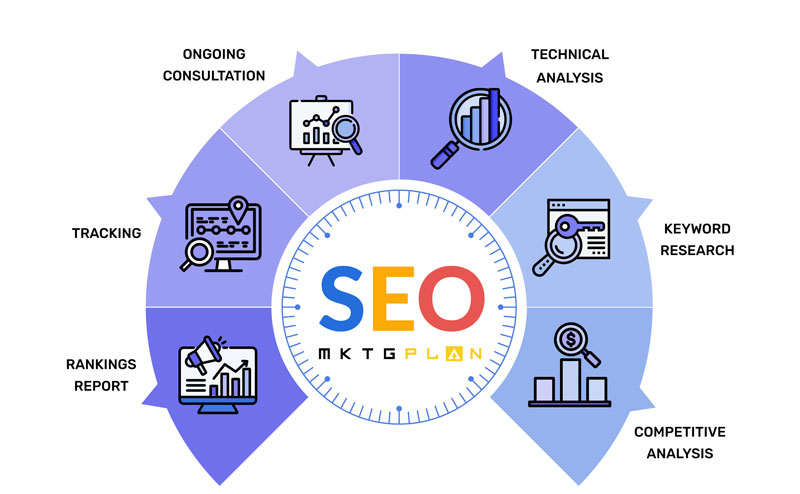Achieving SEO Success with the Right Indicators in 3 Easy Steps
In today’s digital age, mastering SEO (Search Engine Optimization) is crucial for any business aiming to grow its online presence and drive lasting results. As a digital marketing agency, we understand the importance of selecting the right indicators to measure your SEO success. This guide will walk you through three easy steps to help you choose the perfect indicators for your SEO strategy, ensuring that your website achieves optimal visibility and performance on search engines.
1 – Understand the Importance of Key SEO Indicators
Before diving into the specific indicators, it’s essential to understand why they matter. SEO indicators, also known as key performance indicators (KPIs), help you measure the effectiveness of your SEO efforts. They provide insights into various aspects of your website’s performance, from traffic and engagement to rankings and conversions. By monitoring these indicators, you can identify what’s working, what needs improvement, and how to adjust your strategy to achieve better results.

2 – Identify the Most Relevant SEO Indicators
To choose the perfect indicators for your SEO strategy, focus on the ones that align with your business goals and objectives. Here are some of the most critical SEO indicators to consider:
- Organic Traffic Organic traffic refers to the visitors who arrive at your website through unpaid search engine results. It is a primary indicator of your SEO success, as higher organic traffic usually means better visibility and relevance for your target keywords. Tools like Google Analytics can help you track and analyze your organic traffic data.
- Keyword Rankings Keyword rankings show where your website stands in search engine results pages (SERPs) for specific keywords. By monitoring your keyword rankings, you can assess the effectiveness of your SEO efforts and make necessary adjustments to improve your positions. Use tools like Google Search Console and third-party SEO software to track your keyword rankings.
- Click-Through Rate (CTR) CTR is the percentage of users who click on your website’s link in the search results. A higher CTR indicates that your website’s title and meta description are compelling and relevant to searchers. You can find CTR data in Google Search Console.
- Bounce Rate Bounce rate measures the percentage of visitors who leave your website after viewing only one page. A high bounce rate may indicate that your website’s content or user experience needs improvement. Tools like Google Analytics can provide detailed bounce rate insights.
- Conversion Rate Conversion rate is the percentage of visitors who complete a desired action on your website, such as making a purchase, filling out a form, or signing up for a newsletter. Tracking conversion rates helps you understand how effectively your website converts visitors into customers. Use Google Analytics to monitor and analyze your conversion rates.
- Backlinks Backlinks are links from other websites to your site. They are a crucial indicator of your website’s authority and trustworthiness. The more high-quality backlinks you have, the better your website will rank in search engine results. Tools like Ahrefs and Moz can help you track your backlinks.
3 – Implement and Monitor Your Chosen Indicators
Once you have identified the most relevant SEO indicators for your business, it’s time to implement and monitor them. Here are some practical tips to help you get started:
- Set Up Tracking Tools Ensure you have the necessary tools in place to track your SEO indicators. Google Analytics, Google Search Console, and other third-party SEO tools are essential for monitoring your website’s performance.
- Create a Reporting System Develop a reporting system to regularly review and analyze your SEO indicators. This could be a weekly or monthly report that highlights key metrics, trends, and insights. Use this report to identify areas of improvement and adjust your SEO strategy accordingly.
- Optimize Your Content and Website Based on your SEO indicator data, make necessary optimizations to your content and website. This may include updating your keywords, improving your meta descriptions, enhancing your website’s user experience, and building more high-quality backlinks.
- Stay Updated with SEO Best Practices SEO is an ever-evolving field, and staying updated with the latest best practices is crucial. Follow industry blogs, attend webinars, and participate in SEO forums to keep your knowledge current and ensure your strategies are effective.
Mastering SEO and choosing the perfect indicators for good results is a continuous process that requires dedication, analysis, and optimization. By understanding the importance of key SEO indicators, identifying the most relevant ones for your business, and implementing a robust monitoring system, you can significantly improve your website’s visibility and performance on search engines.
As a digital marketing agency, we are committed to helping businesses like yours succeed in the competitive online landscape. For more information on our services, including search engine optimization and web design, visit our website and discover how we can support your digital growth journey.
FAQs
SEO indicators are crucial because they provide measurable data on various aspects of your website’s performance. By tracking these indicators, you can understand how well your SEO strategies are working, identify areas that need improvement, and make informed decisions to enhance your website’s visibility and ranking on search engines.
It is recommended to monitor your SEO indicators regularly, at least once a month. Regular monitoring allows you to stay updated on your website’s performance, quickly identify any issues, and make timely adjustments to your SEO strategy. For more dynamic websites or highly competitive industries, more frequent monitoring, such as weekly, may be beneficial.
Yes, you can improve your SEO indicators on your own by following best practices and utilizing various SEO tools. However, working with a digital marketing agency can provide you with expert guidance, advanced resources, and tailored strategies, making it easier and more efficient to achieve your SEO goals.

